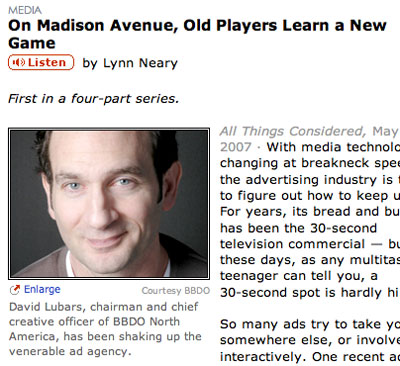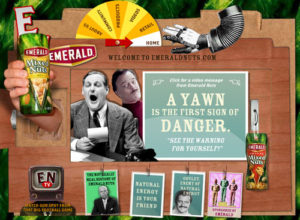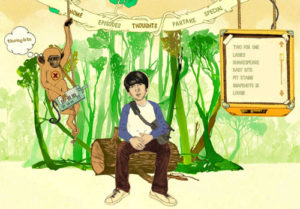As published in the Daily Southerner.
Tarboro is getting a new website. The Town Council voted 7-1 Monday night to enter into a contract with Circumerro Creative Media Agency of Jackson Hole, Wyo., not to exceed $44,800 to establish a stronger Web presence in order to attract new residents and businesses to the area.
The town is matching $22,400 from ElectriCities. The present website was developed about five years ago. Circumerro, which was founded 13 years ago by Councilman John Jenkins’ 38-year-old son Latham, was the recommendation of Town Manager Sam Noble and staff in March.
However, the selection was delayed a month when new Councilman Melvin Muhammad requested presentations by Circumerro and Regency Interactive Corp. of Rocky Mount, the two firms that submitted proposals. Regency’s John Saldi emphasized the need to have a website that would be found by the various Internet search engines. He said he could do so through website optimization.
Jenkins, who grew up in Tarboro, said the secret to an effective website is to deliver a well-crafted message. He emphasized visuals, photos and videos. During Jenkins’ presentations he frequently made comments that showed he was familiar with the town he grew up in and the surrounding region. He said the website could be a key tool to attract businesses and people to the community. “Effective content creates a great website,” Jenkins said. “Tarboro has a great story and I look forward to helping share it. We need to represent Tarboro in the right light online.”
Jenkins said 70 percent of people use the Internet daily and 80 percent of new homebuyers look on the Web first. Muhammad said later he voted against Circumerro because Regency emphasized making the website so it would found on search engines. “We need to make it easier to find us,” he said.
Jenkins said, “Consumers expect more from the Web experience. We are going to deliver that.” Councilman Dr. Steve Hoard endorsed Circumerro, the firm his company Kanban uses. Jenkins said he would have a new website ready to launch by August.

Evolution of media is occurring at a rampant pace these days as the Internet and fragmentation of media at large is driving consumers to consume their daily news and information through various mediums.
“I can’t take it anymore. I hereby inaugurate my New York Times Deathwatch, which will continue until the last Sulzberger has left the building,” says Marc Andreessen in his blog, ranting about the newspaper model as obsolete.
It is too early to say if The New York Times is headed for a museum exhibit. The paper has the third largest print circulation in the US and one of the largest—if not the largest—online readership for a newspaper.
The analogy that I fall back on with new media is what happened when the automobile was first invented. It was referred to as the “horseless carriage,” when in reality it had nothing to do with the established mode of transportation at the time. It was a radical new invention and it created a new category in itself.
So why do we even worry about how the newspaper industry is being effected by the Internet and fragmentation of media? Of course we do: it is an easy target to pick on. The real energy needs to be spent on how the evolution of the mediums is occurring and that hybrids never win the day.
What is at stake is what the future holds for how we personalize our information delivery, consume it on a device that is portable, and how we interact with it. I predict this is not newspapers becoming online newspapers, but rather new media properties evolving out of traditional mediums.
So will The New York Times evolve from being a horse and carriage to an automobile? They have a lot at stake to not evolve. Yet the true question is whether or not a new medium will emerge out of this old one and if it will be The New York Times that will drive that change in order to survive.
—Latham
How to effectively promote your business online.
Visitors that come to Jackson Hole are looking for travel information online including video of their favorite destination. Web video can help highlight aspects of your business. Let your online audience authentically experience your product or service like no other medium can.
Learn how to effectively promote your business online at a seminar presented by Circumerro and Jackson Hole Chamber of Commerce. The seminar will take place on Wednesday, February 27th from 8–9 a.m. at the First Interstate Bank training room, 802 W. Broadway. A light breakfast will be provided.
What you will learn in the seminar:
—How Web video has increased sales for other businesses
—How to utilize it in your business
—How easy it is to shoot and distribute online
Please RSVP by 2/25 to Mary Haworth at 307-733-3316 ext. 17 or maryh@jacksonholechamber.com.
Funny how one thought can spawn another. Latham’s post on Locale Best Practices of The Marriage of Online Video and Real Estate got me thinking about something relatively random I read earlier this week. In his Salon Machinist blog earlier this month, blogger Farhad Manjoo details a comment made by Apple’s guru-in-chief Steve Jobs about the new iMovie program that comes on the new machines.
An Apple employee whom Jobs identified as “one of our most brilliant video engineers” took a vacation recently to the Caribbean and, when he came back, tried to make a movie of his trip in a half-hour. “He couldn’t do it,” Jobs said. The old iMovie—not to mention Final Cut Pro, the company’s professional video-editing program—just didn’t have the tools to do a good movie so fast. So the fellow created his own program. “We were so blown away that we decided to use it,” Jobs said.
With this new software and its productivity-enhancing features, one might suppose they will have the ability to create simple videos even faster and easier than they can right now (that is, if they’re doing so on a Mac). Hard to say exactly how that might manifest, but one can guess that entrepreneuring folks like Andre Kendall (who, according to this referenced Wired blog post, himself admitted that editing his MiniDV movies in iMovie “was too lengthy of a process”) might take advantage. The first wave of the short-form, online (call it what you will) video revolution has barely begun to crest.
—Chris

Extension of the familiar is intricate to the process of defining new things in life. With the invention of something new, we tend to equate it with something we are familiar with. That is until we become familiar with the thing itself. For example, our grandparents and others once referred to the automobile as the “horseless carriage.” Of course we no longer do so.
My question is why do people tend to call Web video or video posted online “TV” Obviously Web video is nowhere near the traditional TV experience, i.e., sitting on your couch with a high-calorie drink and high-calorie chips, committing yourself to X amount of time in order to enjoy a show with a time-spot predetermined by network executives and the businesses whose ads litter the experience.
Who wants to do that? Personalization of your media experiences is now mainstream and we want to choose what we watch, when we watch it, and where and how we watch it.
So why are we going down this road of the extension of the familiar? Are we really not yet used to determining our media experiences? It’s not WebTV. We need a new term for this.
—Latham
Locale has launched the Best Practice’s blog to help our advertisers (realtors and others operating in specific real estate markets) embrace the changes and disruptions the Internet is causing their industry, and learn how to leverage the Internet as the dominant marketing medium it is becoming.
The Internet is an evolving medium, so our coverage on Locale Best Practices has great breadth, from search marketing to how the adoption of technology by consumers creates opportunities for first-movers in the market. No longer can realtors rely on walk-in traffic and traditional advertising venues; rather, they must engage with potential buyers in an online environment, during the customer’s research process and before any relationship commitments are made.
Each Locale Best Practices blog entry identifies a trend or topic and gives you advice on what to do about it. Experience the advantage today. Subscribe via email or RSS feed to Locale’s Best Practices blog.

Today I noted a couple of things going on with so-called “new media”; and worth mentioning, I found both tidbits online for free after having missed them in their traditional “old media” delivery channels.
Perhaps the next best thing to being at the leading edge of “new media” (if you’re part of the “old media”) is reporting on it. Enter the NPR series (just started today) on one of Madison Avenue’s oldest ad houses’ approach to the latest thing. I heard the teaser during Morning Edition and was eagerly awaiting the story on my drive home. It was interesting, but not what I expected. I hope the rest of the series is a little more compelling. At the very least, it’s hooked me into waiting for the next installment.
Meanwhile, Organic’s blog, Three Minds, rebroadcast Rupert Murdoch’s Special Report “Mixed Media,” which appeared on Forbes’ site on May 7. Perhaps the most interesting, yet unsurprising statement, is that “old media are threatened by the erosion of our traditional profit centers.”

I’m thinking that’s what NPR was thinking when they chose to examine the subject, but they might have missed the mark.
What ever you might feel about Mr. Murdoch or his enormously successful Fox News empire, if you’re at all in tune with what’s going on in the overall media world, you’ve got to at least appreciate his perspective on the direction of mass media, and his ability to express it in the throes of a multi-billion dollar take-over attempt. You can’t deny it: he gets it, but we’ll just see if he can make “it” happen.
—Chris
Website design has been pushing the envelope for some time. In my research (read: surfing) I’ve come across some compelling sites that are delivering a variety of information in some very unorthodox ways. Sometimes it’s useful, sometimes it’s trivial. One category of sites I’ve come across is the genre I would consider simply “fun.”
These sites that I consider fun are sites that take a non-traditional approach to delivering their “information,” often a fairly loose term. But they challenge the visitor to explore the site—to search every nook and cranny for tidbits they might not realize were there at first blush, and that they probably didn’t know they needed to find. At the end of the trip, you probably aren’t that better off for having combed the site for every last tidbit, but you probably had a good time getting there and were challenged to think differently about how you find information on a website.
Check out these two examples…and have “fun!”


Being a new contributor to the blogosphere, I’ve been paying more attention to this realm lately. Here are a few blogs I find myself returning to regularly. Feel free to share your favorites.

It’s great when someone from little ol’ Jackson Hole can do something to make an impression on the outside world, and Keith Peters is doing just that with his Carbon Neutral Journal. Keith posts his entries religiously every morning, so there’s always interesting stuff to read after you fire up the computer in the morning. As the story goes, Peters (an ex-Nike communications guru often credited for, among other things, creating nike.com, before it was hip to do such things) woke up in the middle of the night not too long ago worrying about his family’s carbon footprint and decided to do some things about it. His blog is just one of those things.

Not nearly as socially conscious, but arguably more entertaining is David Gonzales’ thesnaz.com. Keeping me coming back this season has been the mini v-log serial “Teewinot to Corbet’s,” where DG documents his (still?) girlfriend’s progression as a new skier from the Teewinot lift to dropping in to Corbet’s in one season. The last episode ended on a bit of a downer note, but I seem to have noticed a few more blog entries as of late (could be due to Lauren’s [I’m guessing here] increased couch-time due to an ACL injury relapse). I’ve particularly enjoyed the “Without a Hitch” video, featuring two hapless skiers being repeatedly denied a ride up the pass by lone driver after lone driver passing them by in their SUVs. Now there’s some carbonneutral.com blog fodder.

Patagonia has finally entered the fray with their new blog, thecleanestline.com. Entries are so far brief, but typically interesting and short and sweet, just like a blog entry should be. I particularly like the video of Ron Kauk talking about Fern Spring in Yosemite; it’s a fine example of the type of Web video we here at Circumerro are striving to create.

Since I’ve covered Nike and Patagonia, here’s a blog that I’d hope ours could emulate in some way: the thought kitchen is the blog by the employees of the new clothing company (comprised mostly of ex-Nike and ex-Patagonia employees), called Nau, and it’s “dedicated to stirring the pot.” There’s a nice combination of thought-provoking and entertaining here.

ThreeMinds is Organic’s blog on what’s happening in the world of digital marketing (and sometimes beyond). According to their Web site, Organic is a “digital marketing agency that designs and builds exceptional interactive experiences for leading companies to drive brand awareness and more profitable customer relationships.” I couldn’t have said it better myself. Keeping an eye on such things, I couldn’t help notice their post on USA Today’s recent switch to a more Web 2.0 approach to delivering the news—definitely a news sight to keep an eye or two on.
More to come…
—Chris

Don’t these people have something better to do (for you)?

A State Police bomb squad officer in Somerville removed a device from a McGrath Highway column on Wednesday. (CJ Gunther / European Pressphoto Agency)
Viral Marketing. It’s become the topic of the week (“it’s HOT!”), what with the “Aqua Teen Hunger Force” (or, for those in the know, ATHF) debacle in Boston. In case you hadn’t heard, New York-based marketing firm Interference, Inc.—known for their guerrilla marketing efforts—placed a number of electronic boards (similar to the classic children’s toy Light Brite) featuring characters from Cartoon Network’s “Aqua Teen Hunger Force” in so-called strategic places around the city to create a viral buzz about the show. Apparently a subway worker, not quite clear on the concept, mistook the “electronic device” for a bomb. Long story short, a large part of the city of Boston and its public transportation system were shut down while authorities “defused” the suspect devices.
Two weeks ago, in a parallel universe, 22-year old design student Todd Vanderlin “had just left Lucky’s lounge in South Boston when he spotted what looked like an alien glowing on the side of a bridge. He pulled out his digital camera, photographed the illuminated plastic figure, and posted the images on his blog,” so says boston.com.
Yeah, that’s right: two weeks ago.
Now, there’s no telling if the Lite-Brite-like thing in the subway was there for the two weeks (or longer?) that the one Mr. Vanderlin saw was, but you’ve got to wonder if the folks who identified the item in question as an explosive devise are really on their game and even on the lookout for real threats in a “post-9/11 world.” Oh yeah, did you hear that Boston was only one of ten—yep, count ’em—ten cities targeted in this campaign?
But back to the marketing. There are many questions we can ask about and—I’m guessing here—things we can learn about this real-world tragicomedy.
The news sites are talking about the legality of the [fill in the blank: “hoax,” “prank,” “stunt,” “misadventure,” etc], while the blogosphere and other (perhaps more thoughtful) media have delved into the deeper ethical questions. (Thursday’s Talk of the Nation committed considerable time to the topic.)
One thing’s for sure if you’re following any of this on the Web: there is a wide generation gap between the ages that see this endeavor as a kind of advertising message and those that see it as a threat. Duck and cover anyone?
Meanwhile, as they wait for their stories to unfold, the two “artists” who take responsibility for placing the devices in Boston can thankfully find some humor in the gravity of the situation they’re now in: During their arraignment they reportedly had difficulty keeping straight faces when Assistant Attorney General John Grossman described the items at the root of the mayhem as “bomb-like devices.” (They pleaded not guilty to charges of “placing a hoax device in a way that causes panic and disorderly conduct.”)
Good luck to them.
Meanwhile, we wholeheartedly engage in discourse about the unintended results of this unconventional type of marketing campaign and continue to poke around the edges of the discussion about original ways to market in a world that absorbs everything and changes by the nano-second.
Oh yeah, and in the category of “there’s no such thing as bad PR,” the current Ebay bid for one of those Lite-Brite things: $3,150.
—Chris
